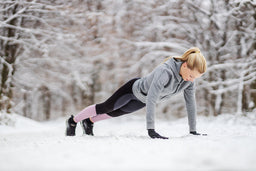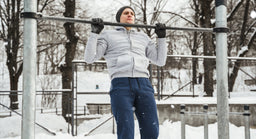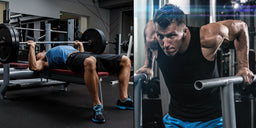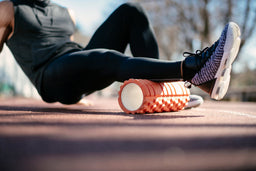
On-Body Load vs Free Weights: What's The Best Way Of Loading For You?
On-Body Load vs Free Weights: What's The Best Way Of Loading For You?
With calisthenics, perfecting bodyweight movement, form and skills are all essential. But once we have reached that, where next? Well, this is where weighted training comes to the fore. Enabling us to strike a perfect balance between strength and form, weighted training allows us to incrementally build strength through the full ranges of a particular movement.
Weighted training allows for a perfect combination between motor control, hypertrophy and strength across all movements in calisthenics, and we can apply the weight correctly through the body, or with a more free weight approach to emphasize maximum effort training or to put it another way, going closer to our 1 rep max. In order to progress and get stronger, progressive overload needs to be applied, whether through weight or not. Weight is the easiest metric to track through your training though, as you can just apply bigger numbers as you progress.
But adding weight is just adding weight, right? Sort of, adding weight to any movements will increase strength but which is the most effective for your goals? On-body load or free weight load?
On-body load in a Calisthenics context would be a weighted vest, for the most part. A weighted vest can be scaled up or down in weight to allow progressive overload through what may otherwise have been a bodyweight exercise. A weight vest can feel oppressive when worn as it sits across the whole body, so that could also be a consideration for you. Free weight load would be adding weight plates, or Kettlebells, to a weight belt, for example. Anything where additional weight is unsupported by the body. This can feel like there is too much drag through the concentric part of any movement, so watch out for this when you are training.
I like to think of the differences like this; with on-body load, you are loading your body to be the weight of someone heavier than you by X amount, depending on how heavy the weight vest is. With free weight load, the weight isn’t supported by the body so that is the true force of the weight through a specific area. Plus, gravity then becomes a factor as well, as the weight, or majority of it, hangs free.
For overall strength through the body, I would start with a weighted vest, then scale up to adding free weight through a dip/weight belt. This way you can feel what free weight, and additional forces, feel like. A weighted vest allows you to perfect form and movements by lifting the weight on the body. Then I would switch to a weight belt to push further, and to feel what those movements feel like with weight proportioned differently. This would be best for completing reps and pushing yourself to max level. Then add the two together and use a combination of both to split, or add, the weight to your movements, for the complete package.
You can grab a weighted vest of your own here:
We’d love to see your weighted training system and how it’s going. Tag us @gravity.fitness so we can see your weighted progress!
Also check out our Calisthenics store so you can grab the latest and greatest weighted vests and free weight options for your workouts!

































